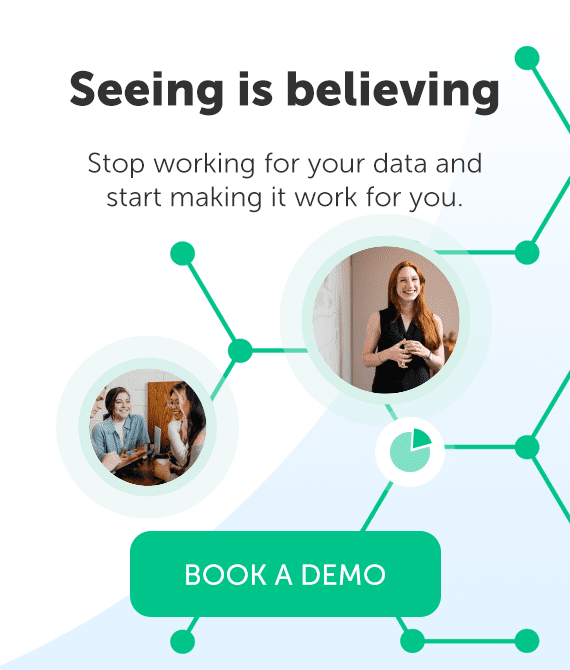In AEC marketing, aligning sales and marketing teams is essential for long-term success. By leveraging relationship intelligence tools, AEC firms can optimize lead generation and build stronger client relationships. In this blog, we will explore solutions that can help streamline AEC marketing strategies, ensuring your firm stays ahead in this evolving industry.
- Who do you want to do business with?
- What’s your lead generation process
- How do you collaborate and when?
1. Who do you want to do business with?
When it comes to zeroing in on your target customers, your management, sales, and AEC marketing teams need to be highly prescriptive in defining who you plan to sell to.
- What is your ideal company profile?
- Who are the key personas and job roles that will influence a purchasing decision?
- What keeps those buyers up at night?
- What are the most effective channels for engaging these buyers? Events? Social media?
- Do we have relationships internally with the key buyers at the account?
For example, your ideal target customer may be the director of operations for a company with $200 million dollars in revenue who wants to start a building expansion project within the next six months. Knowing that your CFO used to work closely with the director of operations at a previous company could be very valuable intel.
Effective targeting goes beyond gathering demographic and behavioral data points. The best targeting is rooted in relationships.
When you combine marketing campaign data, behavioral data and a real-time relationship map of who knows who across your business, you’ll find a much faster way to drive new business at scale.
For instance, you might realize your most ready-to-buy prospects know two people within your extended network and interacted with your firm at least six times a month. Granted, this type of granularity would take a bit of time for data analysts to crunch the numbers. But with relationship intelligence tools like Introhive, the data is analyzed and shared with end users automatically.
Relationship analytics give you a line of sight into the target relationships that will really move the needle.
They highlight and visualize at a glance key prospecting factors, like company size and the typical number and level of people involved in purchase decisions. Plus, they can help you spot—and keep track of—activities that often predict success, like consistent engagement.
2. What’s your lead generation process?
Now that you’ve pinpointed your AEC firm’s ideal prospects, you’ll need to develop processes that optimize AEC marketing and generate the best leads for your sales team.
Unfortunately, 50 percent of initial prospects a sales team will pursue turn out to be a good fit for the company. There are a few things you can do to ensure you’re attracting the right audience.
The first phase is building top of funnel awareness. Marketing and sales can team up here to create content for their website that speaks to the different stages of a buyer journey. This content needs to be timely and relevant, speaking to the common pain points your buyers (outlined in step one) experience.
Someone unfamiliar with your offering may find value in an educational blog that outlines how a firm can solve a unique business challenge. Other buyers that are further along in their journey may want to see customer testimonial videos of how you solved that problem for someone else in the industry.
While you do want to sell yourself, your content also needs to also be educational, aiding in a potential client’s research. At this stage, you are building trust and establishing your firm as the thought leader in your space. If your stellar content helps answer a burning question, your firm is that much more likely to make a prospect’s short list.
And with a significant portion of AEC buyers relying on online searches and social media to evaluate firms, it’s important you deliver a mobile-friendly experience, as well. Nothing can derail trust or confidence in your company like a poor experience with your website across different devices used by your buyers.
As your funnel starts to fill with quality leads, your marketing and sales teams need to work together to define a channel-based lead-generation strategy, which identifies critical milestones and lead hand off parameters for when marketing should hand off a lead to sales.
Different behavioral activities of buyers need to be treated and nurtured differently. Lead scoring models and a focus on high-quality data can help keep this transfer smooth and effective.
The sales team, meanwhile, will need expectations for lead follow-up time, lead-nurturing activities and supporting documentation to help them make their case.
3. How do you collaborate? And when?
If your sales and marketing teams are collaborating at all, you could consider your firm a bit ahead of the game. Nearly 70 percent of respondents in a B2B Sales and Marketing Collaboration Study said sales teams aren’t rewarded for supporting marketing objectives, and more than half said sales doesn’t follow up on 15 percent of marketing leads.
But there’s always room for improvement—especially if you want to beat out competitive firms through better AEC marketing strategies and aligned efforts.
For their part, your sales team can help improve the effectiveness of targeting and outcomes by providing ongoing feedback about the quality of leads and possible marketing opportunities.
- Are there certain job titles that speed up the sales process than others?
- Do certain types of marketing resources resonate well with prospects, like videos or infographics?
- Where are the gaps in the firm’s sales and marketing materials that could increase market visibility and awareness?
Say, perhaps, they’ve noticed a lot of prospects have similar questions about your sustainability measures. That’s great content for a blog post, email, eBook, or another campaign.
Meanwhile, marketers can give their sales colleagues a heads-up on new initiatives and campaigns—and the thinking behind them—to help cultivate buy-in, excitement and ultimately sales enthusiasm that leads to growth.
Relationship intelligence automation through tools like Introhive can make these steps a lot easier. Because they centralise your client and prospect data, your entire firm has a clear view into one, consistent pool of data. And when your sales team can quickly and easily see who knows who—and how well—their chances for rustling up warm introductions vastly improve.
Equip yourself with tech that builds leads and relationships
Now that the digital revolution has reached the AEC industry and its customers, firms that want to compete and win must revamp how they identify leads and nurture relationships. Step one is aligning sales and AEC marketing on the right target customer profiles and lead-generation efforts.
To help you get there, Introhive identifies promising leads, automatically ensures always-accurate contact data, and simplifies relationship oversight, so you know—at a glance— who to talk to, and why.
For more advice on growing your AEC firm, download our Business Development Playbook. And to get an inside look at how Introhive can streamline your sales and marketing alignment, request a demo today.
How Introhive Accelerates Business Development
See for yourself how Introhive automates mundane tasks and manual CRM data entry, while also serving up key client insights—exactly when and where busy professionals need them most.
FAQ on AEC Marketing
What is AEC marketing, and why is it crucial for architecture, engineering, and construction firms?
AEC marketing focuses on creating strategic approaches that align business development, sales, and marketing to generate leads, strengthen client relationships, and secure new projects. In the highly competitive and relationship-driven AEC industry, firms can no longer rely solely on their portfolio of completed projects or technical capabilities. AEC marketing is crucial because it helps firms build a strong market presence, communicate unique value propositions effectively, and differentiate themselves from competitors through targeted messaging. Effective AEC marketing ensures that your firm is top-of-mind when potential clients—whether developers, municipalities, or private sector clients—are ready to select design and construction partners.
How can AEC marketing improve lead generation for architecture and construction firms?
AEC marketing enhances lead generation by targeting specific market segments within the built environment. By identifying the decision-makers and influencers within these segments—be it owners, developers, or government agencies—firms can craft messaging and content that speak directly to their needs, project challenges, and timelines. Strategies such as thought leadership in the form of industry reports, case studies on complex or landmark projects, and webinars on emerging trends (e.g., sustainable design or construction technology) establish credibility and build trust.
Relationship intelligence tools like Introhive help track and nurture these leads through long sales cycles, ensuring timely follow-ups and tailored communication that aligns with where the lead is in their decision-making process. When marketing and business development teams collaborate seamlessly, qualified leads are handed over at the right time, shortening the sales cycle and maximizing project wins.
What are the key components of a successful AEC marketing strategy?
A successful AEC marketing strategy is built on the following components:
- Client Persona Development & Market Segmentation: Develop clear profiles of your ideal client sectors, such as healthcare, commercial, or public infrastructure, and understand the unique needs, pain points, and decision-making processes within each market.
- Integrated Business Development & Marketing Efforts: Ensure that marketing and business development are working hand-in-hand to streamline lead generation and handoff processes. Use account-based marketing to focus on key opportunities that align with your firm’s expertise and project experience.
- Tailored Content Marketing: Content marketing is a top marketing priority for AEC firms and, more specifically, creating content that addresses specific phases of the client journey and project lifecycle. This could include whitepapers on regulatory compliance, blog posts that address pre-construction challenges, or client testimonials that highlight successful project outcomes and value-added services.
- Relationship Building & Networking Tools: Tools like Introhive can map connections within your network, highlighting key decision-makers and influencers, and facilitating personalized outreach to strengthen relationships. Given the importance of referrals and long-term relationships in the AEC industry, these tools are essential for building and maintaining client trust.





